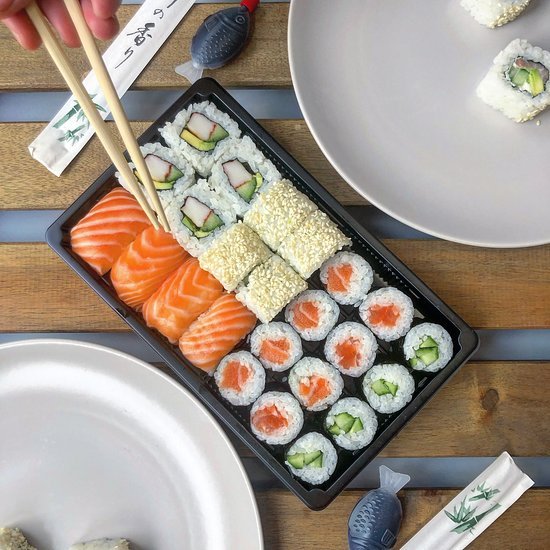
Sushi Making:
The techniques that the pros use to make perfect sushi at home. In this tutorial, we'll be making two classic sushi rolls: Kapomaki, a cucumber roll, and Tekamaki, a tuna roll.
Focus on the Rice:
When it comes to making sushi, the rice is everything. To make perfect sushi rice, I recommend using Japanese short-grain rice, such as the Matsuri brand Koshihikari. Use a rice cooker to make your life easier and follow the manufacturer's directions for a sushi rice setting. After washing the rice, make sure to get rid of the starch to ensure the right consistency and stickiness.
Making the Sushi Vinegar
Sushi vinegar is a critical component of sushi. For this recipe, we'll be using two cups of rice vinegar, a quarter cup of salt, three-quarters of a cup of sugar, and a piece of dried kelp seaweed. Mix the salt and sugar together and let them dissolve. Add the rice vinegar and kombu, and let it sit aside while you prepare the other ingredients.
Preparing the Ingredients
For the Kapomaki, we'll need cucumber, and for the Tekamaki, we'll need tuna. Cut the cucumber into pieces that will fit inside the nori. Remove the seeds to avoid excess water. When working with proteins meant for raw consumption like tuna, make sure to source it from a trusted supplier and that it's sushi-grade. Cut the tuna into strips, making sure it's cold to maintain freshness.
Mixing the Sushi Vinegar with the Rice
Traditionally, sushi rice is mixed in a vessel called a hangiri, but using a regular bowl is just fine. Measure out a one-third cup of sushi vinegar for every cup of dry rice. Pour the sushi vinegar evenly over the rice and mix it using a cutting and folding motion.
Making Sushi at Home
Creating sushi at home might seem daunting, but with some practice, it can be a fun and delicious activity. Here are some tips and steps to follow:
Preparing the Sushi Rice
- Mix the rice gently to keep releasing starch.
- Cut the rice grains to ensure they are separated and the sushi vinegar is evenly distributed.
- Make sure the rice is warm to prevent starch from coagulating and tightening up.
- Mix in the vinegar when the rice is piping hot and put it back in the rice cooker to stay warm.
Handling the Sushi Rice
Handling sushi rice can be tricky, but using vinyl gloves with a few drops of neutral oil can help prevent the rice from sticking to your hands.
Making the Kapamaki Roll
- Place the nori seaweed's shiny side down on the bamboo mat.
- Add the seasoned sushi rice, leaving a couple of centimeters on top of the nori.
- Create a damp area on the top edge where the ingredients will rest.
- Add wasabi and cucumber batons.
- Roll gently, pressing to make sure the rice and seaweed stick together.
- Fold the flap of nori over and cut it into thirds.
Making the Tekamaki Roll
- Place the nori seaweed's shiny side down on the bamboo mat.
- Add the seasoned sushi rice, leaving a couple of centimeters on top of the nori.
- Create a damp area on the top edge where the ingredients will rest.
- Add wasabi and tuna.
- Roll gently, pressing to make sure the rice and seaweed stick together.
- Fold the flap of nori over and cut it into thirds.
Serve with pickled ginger and soy sauce on the side. Wasabi can also be added to taste.